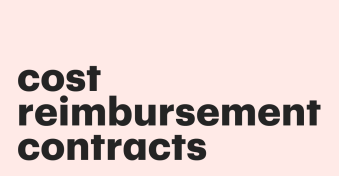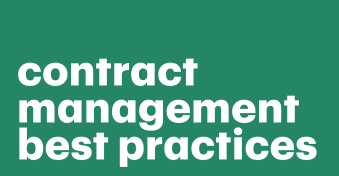As a business owner or contractor, cost-plus fixed-fee (CPFF) contracts can help you maximize profits.
CPFF contracts estimate a final cost for a project, covering all direct as well as indirect expenses that may arise.
They also guarantee a fixed fee in addition to projected expenditures, which is a percentage of the estimated cost.
In this article, we’ll discuss how a cost-plus fixed-fee contract works and how contractors can use it to manage partnership risks.
Key takeaways
- Cost-plus fixed-fee contracts encourage contractors to complete a job before the specified deadline in order to maximize their profit.
- Cost-plus fixed-fee contracts are the most common variations of standard cost-plus contracts. Others include cost-reimbursement contracts, cost-plus incentive-fee contracts (CPIF), and cost-plus award-fee contracts (CPAF).
- Cost-plus contracts protect contractors from risk and unforeseen circumstances, while fixed-price contracts specify a fixed sum for the entire project without incentives or additions.
What is a cost-plus fixed-fee contract?
A cost-plus fixed-fee contract is a business agreement that specifies a fixed sum as well as incentives for finishing the job within the specified deadline.
This contract combines elements of a fixed-price contract and a cost-plus contract.
Other variations are called cost-reimbursement contracts, cost-plus incentive-fee contracts (CPIF), or cost-plus award-fee contracts (CPAF).
Cost-plus fixed-fee contracts further incentivize contractors to complete jobs by ensuring the buyers or customers cover the project’s actual costs for materials, labor, and overhead.
The fixed fee is a specific amount agreed upon by both the customer and the contractor.
The incentive is a bonus payment or guarantee of future cooperation.
What constitutes a cost-plus fixed-fee contract?
The contents of a cost-plus fixed-fee contract could vary depending on the industry and the scope of the project.
Sometimes, the customer might specify their own terms.
Here are the must-have components of CPFF contracts.
Financial risk allocation
This mandates that the buyer shoulders the risk of the project exceeding its estimated cost.
The (direct and indirect) cost element
This points out the costs that affect the completion of the project directly.
Licensing fees and work permits are indirect costs.
Labor and material costs are direct expenses.
Cost control measures
Subcontractors need to specify measures to manage costs efficiently, especially for government procurements.
This includes outsourcing parts of the projects or buying materials in bulk.
Quality control mechanisms
Contractors must specify how they intend to deliver top-quality services by establishing clear criteria for attaining project milestones and expectations.
Legal documentation
The contracting officer should also confirm that every CPFF contract contains a comprehensive cache of all permits, licenses, and certifications.
What are some applications of a cost-plus fixed-fee contract?
Cost-plus fixed-fee contracts have ideal use cases and applications, whether in private, public, or charitable projects.
- Research and advanced development with uncertainties and unpredictable resource demand, e.g., vaccine development.
- Exploratory development with an undefined scope or timeframe as well as flexible milestones, e.g., weapons manufacturing and space programs.
- Public works construction projects involving close collaboration between the government and contractors.
- Emergency or urgent response projects for natural disasters and unforeseen catastrophes such as tsunami or hurricane reconstruction.
Cost-plus fixed-fee contracts are commonly used in construction projects because the hybrid system leaves enough wiggle room for both the contractor and the client.
Cost-plus vs. fixed-fee contract
Although cost-plus fixed-fee contracts combine elements of both cost-plus and fixed-price agreements, their core tenets are quite different.
According to the federal acquisition regulations (FAR), cost-plus contacts are significantly different from fixed-price contracts in the following ways:
| Cost plus contract | Fixed price contract |
|---|---|
| The contractor’s quote at the start of the project is variable, as it depends on several dynamic elements, like the cost of materials and labor rates. | The contractor’s quote contains a specific fee to cover the actual costs and any economic price adjustment. |
| The actual costs determine the contractor’s profit, which is usually measured as a percentage of the former. | The contractor’s profit is a fixed amount of the final price, which means it depends on how much is left after all expenses. |
| Contractors bear less financial risk, as they don’t lose profit margins irrespective of the difference between actual costs and the cost estimate in the contract. | Clients bear less financial risk, as they don’t have to pay the contractor any amount higher than was agreed to in the contract, irrespective of price fluctuations. |
| Contractors can easily adapt the project to accommodate new demands and changes. | Discourages contractors from accommodating any expansion to the project scope to avoid losses. |
| Focuses on cost-effectiveness and frugal spending to boost profits. | Emphasizes meeting project milestones and objectives within the predetermined budget. |
| Works well for projects with dynamic requirements or scientific initiatives. | Works well for projects with fixed requirements and clear expected outcomes. |
What are the potential challenges of using a cost-plus fixed-fee contract?
Although a cost-plus fixed-fee contract has multiple benefits for all parties involved, it also presents several challenges:
- Since the fixed fee is predetermined, contractors will have to enforce stringent cost controls to eke out a profit, which may lead to subcontracting to less competent companies.
- Change orders or even price changes can derail the project until both parties renegotiate a new price. If an impasse occurs, the project could get stuck in limbo for ages.
- Determining an appropriate contractor’s cost percentage can be complex. You need to balance between fair compensation and the actual cost of the project.
- Working for government agencies, like the Department of Defense, means you are subject to changes in legislation. This is a massive challenge for long-term public works projects.
- If the contractor is unable to deliver the project within the estimated timeline, the government could deny them access to all or parts of the fixed fee.
- The presence of an incentive structure could motivate contractors to prioritize speed and cheap materials over quality, focusing more on the terms of the completion form and cashing out their bonuses.
Benefits of a cost-plus fixed-fee contract
Here are reasons why contractors, NGOs, and government agencies opt for cost-plus fixed-fee contracts:
- A cost-plus fixed-fee contract protects your profit margins, makes procurement simpler, and can lead to higher-quality deliverables.
- CPFF contracts are effective in the early stages of project development when there are a lot of moving parts. They allow you to explore and adjust the scope, unlike firm-fixed-price contracts.
- CPFF contracts foster better communication between clients and contractors, especially when both parties must work closely to guarantee contract performance.
- A cost-plus fixed-fee contract clearly defines allowable costs and other allocations, which will help avoid disagreements over financial disbursement.
Create personalized cost-plus fixed-fee contracts with PandaDoc
A cost-plus fixed-fee contract is an excellent hybrid option for construction projects.
It guarantees contractors a fixed fee for the project while outlining incentives for fast-paced delivery.
To create personalized contract clauses, you can get ready-made, customizable templates from PandaDoc’s digital contract management tool.
The PandaDoc editor combines AI and contract management to help you draft clear, legally binding contracts for any project.
You can also use the platform to differentiate between the types of costs in your project, fill forms faster, and close deals quickly.
To discover how PandaDoc can help you negotiate CPFF contracts, sign up for free today.
Disclaimer
PandaDoc is not a law firm, or a substitute for an attorney or law firm. This page is not intended to and does not provide legal advice. Should you have legal questions on the validity of e-signatures or digital signatures and the enforceability thereof, please consult with an attorney or law firm. Use of PandaDoc services are governed by our Terms of Use and Privacy Policy.


